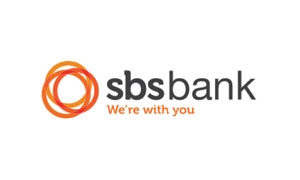
The new week will start with some very sharp 'special' mortgage rate pricing from SBS Bank.
And that comes after reductions across the board from the Co-operative Bank midweek ( ... not forgetting that Housing NZ also reduced some fixed rates).
The result is that challenger banks remain in the game with very competitive rates.
SBS Bank in fact now has three market leading rates.
It's two year fixed rate is now 4.19%, matching HSBC Premier at that level.
Both it's four year and five year rates have been reduced to 4.89% and both are the new lowest carded rates on offer from any bank.
For all practical purposes, the Spring house selling season only has another 8 or so weeks to go and after a modest start (albeit one marginally stronger than last year) it has settled down to a very ordinary pace. Two factors are at work this year: one is that most banks, and especially the larger ones, have noticeably tighter lending criteria and this is dampening house sales interest. That "more prudent" bank stance is both a in-house reaction to what their parent companies are doing in Australia, and more importantly, from perceived additional scrutiny from New Zealand regulators who have a sharper eye out for any prudential mis-steps.
The second influence is the very public airing of the new KiwiBuild projects and pricing. Such deals don't go through real estate agents and banks are offering these first home buyers high LVR options. This is constraining the 'normal' first-home-buyer market for existing homes, with some potential buyers waiting for the new options, and the enhanced financing that will come with them. Lower quartile sellers are facing stern competition. And it is a situation that could go on for many years as KiwiBuild ramps up.
In the past two weeks, wholesale swap rates have not moved much at all and the rate curves have stopped tightening.
See all banks' carded, or advertised, home loan interest rates here.
Here is the full snapshot of the fixed-term rates on offer from the key retail banks.
| below 80% LVR | 6 mths | 1 yr | 18 mth | 2 yrs | 3 yrs | 4 yrs | 5 yrs |
| as at September 24, 2018 | % | % | % | % | % | % | % |
 |
4.99 | 4.19 | 4.85 | 4.35 | 4.49 | 5.55 | 5.69 |
 |
4.95 | 4.19 | 4.39 | 4.35 | 4.39 | 4.95 | 5.09 |
 |
5.35 | 4.19 | 5.05 | 4.35 | 4.49 | 5.59 | 5.59 |
 |
4.99 | 4.19 | 4.39 | 4.85 | 5.19 | 5.39 | |
 |
4.99 | 4.29 | 4.79 | 4.35 | 4.49 | 5.29 | 4.99 |
 |
4.50

|
4.19

|
4.35

|
4.39

|
4.49

|
4.99

|
5.15

|
 |
4.85 | 3.99 | 3.99 | 4.19 | 4.69 | 4.99 | 5.29 |
 |
4.99 | 4.19 | 4.49 | 4.19

|
4.49

|
4.89

|
4.89

|
 |
4.85 | 4.24 | 4.29 | 4.29 | 4.49 | 4.95 | 4.99 |
In addition to the above table, BNZ has a fixed seven year rate which has been reduced recently to 5.95%.
And TSB still has a 10-year fixed rate of 6.20%.
3 Comments
going back
y Stephen Hulme | Sat, 28/10/2017 - 13:56
up2
The best way for a central bank to achieve both low inflation and low unemployment is to make it pursue price stability alone.
Where lower official interest rates equate with "stimulus"?
We need to first make sure we define our terms. Deflation means a general decline in consumer prices. This is distinguished from specific declines as might arise from productivity and technological innovation. A general decline is a monetary phenomenon, not an economic one. This chronic condition is so feared by economists that they have chosen to target a 2% per annum inflation rate (3% in China; 4.5% in Brazil) lest "expectations" of deflation ever become grounded or "anchored.".
Thus, the decline of interest rates to zero corresponds with a monetary imbalance in favor of deflation, if at least an abundance of deflationary pressures. This is something that Milton Friedman also talked about, particularly in 1998 with regard to Japan. He called it the interest rate fallacy, meaning that low nominal interest rates signify "tight" money conditions, or what would be consistent with significant deflationary pressure. It is and remains a fallacy because economists like those at every central bank around the world have decided instead that low rates are only "stimulus."
To correct this view, Friedman pointed out the basic, non-trivial distinction between a liquidity effect and an income effect. Low rates can be stimulative in the short run (the liquidity effect), but over the long run their persistence means something far different. A yield curve is supposed to be upward sloping given the core time value of money and investing. That arises from opportunity cost, meaning the more plentiful the opportunities the greater the time value and the steeper the curve (the income effect). Yield and/or money curves (the eurodollar curve and even the history of the OIS curve) that collapse and remain that way unambiguously demonstrate that "stimulus" deserves only the quotation marks. Read more, more, more and more
https://www.interest.co.nz/opinion/90582/oliver-hartwich-argues-best-wa…


We welcome your comments below. If you are not already registered, please register to comment.
Remember we welcome robust, respectful and insightful debate. We don't welcome abusive or defamatory comments and will de-register those repeatedly making such comments. Our current comment policy is here.